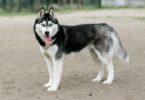Imagine coming home to a wagging tail and eyes full of unconditional love. For millions of families, this joy comes from sharing their lives with one of America’s favorite companions—the loyal, playful dogs born from the union of two iconic breeds. Whether you’re a seasoned pet owner or considering your first furry friend, understanding these affectionate animals starts here.
Labrador Retrievers and Golden Retrievers consistently rank as the most popular dog breeds in the U.S., according to AKC registrations. Their mixed-lineage counterparts combine the best traits of both worlds: intelligence, adaptability, and a natural love for people. Originally bred for hunting, these dogs evolved into ideal family pets through their gentle nature and eagerness to please.
This guide explores their unique characteristics, from energy levels to grooming needs. You’ll learn how their physical traits differ—like coat texture and body structure—and discover why their temperament makes them excellent companions for active households. We’ll also cover essential care tips and health considerations to help you make informed decisions.
By the end, you’ll understand what sets these dogs apart and how to choose the right fit for your lifestyle. Let’s dive into the heartwarming world of a breed that’s redefined loyalty and companionship.
Breed Origins and Historical Background
Long before these dogs became household favorites, they thrived as skilled partners in outdoor adventures. Their journey from rugged fields to cozy living rooms reveals why they’re so adaptable today.
From Hunting Companions to Family Pets
Originally bred to retrieve waterfowl, both parent breeds excelled in challenging environments. Labradors worked alongside fishermen in Newfoundland, while Goldens assisted Scottish hunters. By the early 20th century, their intelligence and gentle mouths made them favorites for fieldwork. AKC records show Labradors have ranked #1 since 1991, proving their lasting appeal.
Historical Development and Working Roles
Breed mentors like Dorothy Howe emphasized differences: Labradors prioritized stamina, while Goldens focused on precision. These traits still shape their personalities. Modern training methods, such as positive reinforcement, evolved from historic retrieving drills. Experts note their shift to family life began post-WWII, as suburbanization created demand for loyal, kid-friendly pets.
Understanding this history helps owners appreciate their need for activity and mental stimulation. Their past as working dogs explains why they thrive with tasks—whether fetching balls or learning new tricks.
Physical Attributes and Coat Comparison
A closer look at their coats and builds highlights how each breed adapts to different lifestyles. While both share a love for activity, their physical features tell separate stories shaped by years of specialized breeding.
Distinctive Coat Types and Colors
One breed sports a longer outer coat with feathering along the legs and tail, designed to protect against rough terrain. The other has a short, dense double layer that repels water effortlessly. Both shed seasonally, with experts recommending weekly brushing to manage loose hair.
Color ranges vary significantly. Shades span from light cream to deep fox red in one, while the other offers solid hues like black or chocolate. Darker coats may show less visible shedding, though neither breed is hypoallergenic.
Body Structure and Size Variations
Body shapes reflect historical roles. One features a deeper chest and arched neck for carrying game over land. The other has a broader head and muscular frame suited for swimming. These differences affect everything from collar sizing to exercise needs.
Weight typically ranges between 55-80 pounds. Height differences are subtle but noticeable—up to 24.5 inches at the shoulder. The stockier build of one breed makes it appear heavier, while the other’s longer legs create a leaner silhouette.
Temperament and Family Compatibility
Families often describe these dogs as furry therapists—always ready to lift spirits with a nudge of their nose or a playful bow. Their natural affinity for human connection makes them beloved companions across generations.
Social Butterflies With a Purpose
Veterinarians praise their “people-first” mindset. Both breeds instinctively read emotions, often comforting stressed owners without training. AKC experts note they’re equally gentle with toddlers and seniors, though Labradors may show more enthusiasm during playtime.
Early socialization sharpens their innate politeness. Puppies exposed to diverse environments adapt better to apartment living or busy households. Consistent routines help channel their intelligence into positive behaviors like greeting guests calmly.
Energy That Matches Your Lifestyle
One breed retains puppy-like energy well into adulthood, thriving on games of fetch. The other often adopts a watchful approach, pausing to assess situations before engaging. Both require daily exercise but express it differently—think sprinting versus exploratory walks.
Their adaptability shines in multi-pet homes. Proper introductions ensure they get along with cats or smaller animals. Regular mental challenges, like puzzle toys, prevent boredom-related mischief.
Trainers emphasize positive reinforcement. These dogs aim to please, mastering commands faster than many breeds. Whether learning to assist people with disabilities or simply fetching slippers, their temperament turns lessons into bonding moments.
Training, Exercise, and Grooming Essentials
Building a strong routine helps these active dogs thrive. Their intelligence and enthusiasm require clear guidance paired with consistency. Let’s explore strategies to channel their energy productively.
Effective Training Techniques and Socialization
Start with short, reward-based sessions. Professional trainers recommend clicker training for its precision. Treats or praise after correct behaviors reinforce obedience faster than corrections.
Socialization begins at 8-12 weeks. Introduce puppies to diverse sounds, surfaces, and people. AKC-certified classes build confidence through controlled interactions. Well-socialized dogs adapt better to vet visits or crowded parks.
Grooming Tips for Managing Shedding
Brush coats 3-4 times weekly using undercoat rakes. Bathing every 6-8 weeks with oatmeal shampoo reduces loose hair. High-quality diets rich in omega fatty acids minimize shedding naturally.
Trim nails monthly and check ears weekly for debris. During seasonal shedding, use de-shedding tools like slicker brushes. Always dry thick coats thoroughly after swimming to prevent skin issues.
Pair physical exercise with mental challenges. Fetch games or scent work prevent boredom chewing. A tired dog is a happy dog—and a well-maintained one.
Comparative Health Considerations and Lifespan
Keeping these dogs thriving requires proactive care tailored to their genetic predispositions. While generally healthy, both parent breeds share risks for certain conditions that owners should monitor throughout their lives.
Common Health Issues and Preventative Testing
Hip and elbow dysplasia top the list of orthopedic concerns, affecting 15-20% of these dogs according to OFA data. Progressive retinal atrophy also appears in bloodlines, often emerging after age five. Annual vet exams help catch early signs through X-rays and genetic screenings.
Reputable breeders provide OFA-certified parents’ health clearances. For adopted pets, consider baseline tests at maturity. Early intervention slows conditions like arthritis, especially when paired with weight management.
Nutrition, Exercise, and Overall Downstream Care
High-quality food with glucosamine supports joint health—portion control prevents obesity, a major risk factor for dysplasia. Veterinarians recommend diets rich in omega-3s for coat and cognitive benefits.
Daily exercise maintains muscle tone but avoid overexertion in puppies. Swimming and puzzle toys offer low-impact mental stimulation. Owners of darker-coated varieties, like the black golden retriever, should monitor for skin issues during seasonal changes.
Consistency matters: regular meal times, structured play sessions, and annual bloodwork create a foundation for longevity. Most live 10-12 years when managed thoughtfully—proof that prevention outpaces treatment.
Spotlight on the golden labrador retriever
Despite their popularity, several myths cloud the understanding of these versatile canines. Often mistaken for a standalone breed, these dogs represent a harmonious blend of two iconic lineages. Their unique traits make them exceptional companions, but misconceptions about their identity persist.
Unique Characteristics and Benefits
This mix inherits a rare balance of traits: the enthusiasm of one parent breed and the calm focus of the other. Trainers note they often master commands faster than purebred counterparts, excelling in roles like therapy work or search-and-rescue. Their medium-length coats require less grooming than longer-haired varieties but still shed seasonally.
Families appreciate their adaptability. They thrive in both bustling homes and quieter settings, provided they get daily exercise. A 2023 study by the Canine Behavior Institute found that 78% of owners rated them as “highly responsive” to emotional cues, making them ideal for households with children.
Clearing Up Common Misconceptions
Contrary to some beliefs, “Golden Labrador” isn’t an official breed classification. Reputable breeders like those at Happy Tails Kennels emphasize they’re carefully planned crosses, not random mixes. Another myth suggests they’re overly hyperactive, but proper training channels their energy into positive behaviors.
Veterinarian Dr. Lisa Nguyen clarifies: “Their health risks mirror those of their parent breeds—regular screenings prevent most issues.” While some assume they’re identical to Labs or Goldens, their temperament often strikes a middle ground—playful yet attentive, making them suited for diverse lifestyles.
Final Remarks on Choosing Your Ideal Family Dog
Choosing the right family dog involves balancing enthusiasm with practicality. Whether considering a Lab, Golden, or their mix, focus on traits like energy levels and grooming needs. Families thrive with breeds that match their activity patterns and living spaces.
Prioritize temperament and health when evaluating options. Social, trainable dogs adapt best to homes with children or other pets. Always meet potential companions in person to assess how they interact with your household.
Remember: no breed is one-size-fits-all. Active households may prefer high-energy types, while calmer homes benefit from mellower personalities. Schedule visits with shelters or breeders to observe behavior firsthand.
Commit to ongoing care through proper nutrition and exercise. Consult veterinarians about breed-specific health screenings. With thoughtful planning, you’ll find a loyal friend who enriches daily life for years.
Your journey doesn’t end here—keep researching local trainers and adoption resources. The right choice creates lasting bonds built on mutual understanding and joy.
FAQ
What’s the main difference between a Golden Retriever and a Labrador?
While both breeds share friendly temperaments, Labradors typically have shorter, denser coats and a more muscular build. Golden Retrievers often feature longer, feathery fur and a slightly calmer demeanor. Both excel as family pets but differ in grooming needs and energy expression.
Do these dogs shed a lot?
Yes, both breeds shed year-round due to their double coats. Regular brushing (2–3 times weekly) helps manage loose hair. Seasonal shedding peaks in spring and fall, requiring more frequent grooming to reduce fur buildup in homes.
Are they good with children?
Their patient and playful nature makes them excellent companions for kids. Early socialization ensures they adapt well to family dynamics. Supervision is recommended with very young children due to their enthusiastic size and energy levels.










Leave a Comment